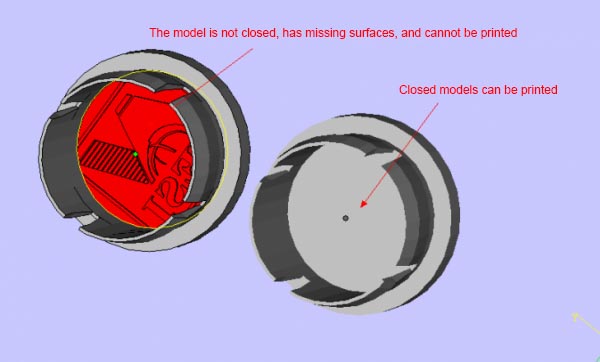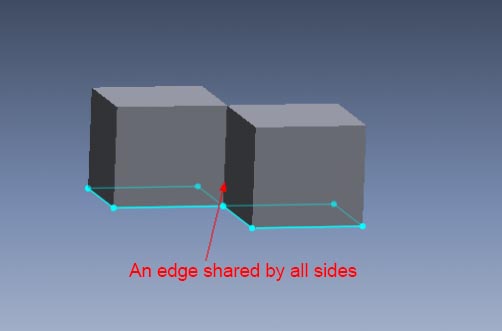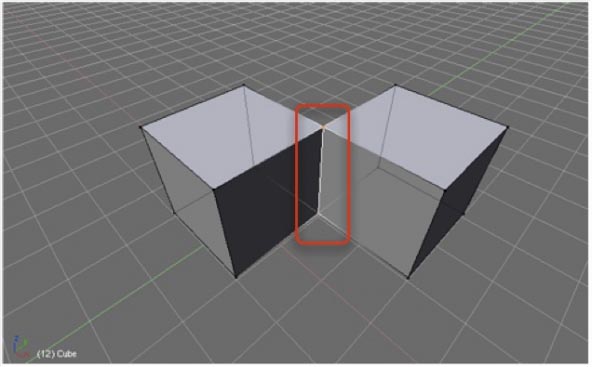How to do 3D printing design?

Traditional 3D design industries, such as animation design or architectural design, basically only need to consider the shape of THE 3D printed model, or even ignore the physical world.Most scenes and objects consist only of visible grids. Objects are made up of pieces and lines and do not need to be connected to each other.But if you want to design a 3D model that can be used on a 3D printing machine and print perfectly as expected, then you need to understand the following:
The 3D model must be watertight
You can also say it’s watertight. You can also say it’s watertight.Watertight means that the 3D model must be an integral whole with a complete boundary. If the model has holes and the printer cannot identify the boundary, it cannot be printed.You can check your model for such problems with some software.
The 3D model must be manifold
Manifold is a mathematical concept, you can imagine a curved surface of a flow, there is no concept of lines and slices, it is composed of surfaces and bodies.In simple terms, if there are multiple faces sharing an edge in a 3D model, it is non-manifold.
The two cubes share an edge, in other words, the edge is shared by four faces.Blender has a function for determining whether 3D models have non-manifold regions, which can be demonstrated in Blender as shown in the figure below:
Other 3D software should have similar functions.
1. The maximum size and minimum shell thickness of 3D models. Even the best 3D printers cannot print infinite items.For the size confirmation, the earlier the better, too large may involve disassembly, too small may lose print details;
Shell thickness is probably one of the most common errors in 3D printing.3D printing is about making things one layer at a time;If a 3D file is not as thick as the shell, it is all slices and wires. The 3D printer has no way to know how thick the layer is, so it can’t print.For us, there will also be requirements for shell thickness, which may be slightly more conservative than the printing process limit, to reduce the chances of damage in the process of transportation and cleaning;
The maximum size and thickness of the 3D model depends on the 3D printing process and material you are using.Generally speaking, the thinnest shell thickness of larger models should not be less than 1mm.Otherwise fragile, and prone to deformation.
2. Normal alignment
Normals are used to distinguish between inner and outer planes, which is important to a printer, otherwise a 3D printer would not be able to recognize the boundary of the model.The normal direction of all the faces in the 3D model needs to point in the right direction.If your model contains contradictory normal directions, the 3D printer cannot tell whether it is inside or outside the model.
3. Merge the overlapping parts
The cross plane will result in the overlapping volume, which will first cause the inaccurate volume calculation and excessive volume calculation. In addition, the orientation of the positioning plane will also cause problems.So the cross coincidence planes have to be merged;
4. Minimum clearance minimum clearance refers to the minimum distance between two shell thicknesses, which is related to the physical limit of 3D printer. If the minimum clearance is less than the printing limit of 3D printing, two walls will be combined into one, which will lead to the inability to distinguish one, or there will be supports or residues.If you want to successfully print movable items or joint items at one time, a gap of 0.6mm is required at the joint or joint to reserve the space.7. Other
Printable 3D files should also follow these rules or recommendations:
1. If you only need to look at the appearance, you can do as much as possible to do the hollowing, which can save some cost;
2. Pay attention to the one-time forming size. If the model is larger than the maximum forming size of 3D printing equipment, it is sometimes necessary to split and print.
3, the price and size of the relationship is close to the third power relationship, so the larger the size, the higher the price, and the growth rate is very fast!
4, cantilever structure, should make the cantilever structure thicker, prevent deformation in the printing process.
5. Objects with large radians, such as cylinders, will not be as thorough as flat objects if printed with transparent materials.
6. The minimum surface detail should not be less than 0.2mm
7. Do not have a thin line smaller than 1.2mm
8. Print in order
Conclusion
Designing models for 3D printing is a bit different from “traditional” 3D design, but that doesn’t mean that 3D designers need to relearn. It’s more about learning new concepts, which are not that hard to do if you keep these concepts and constraints in mind when designing.




Good article! We are linking to this particularly great content on our website. Keep up the great writing. Juliette Fonz Eno Renelle Adelbert Sonja
Very good article. I am experiencing some of these issues as well.. Daveen Hailey Agbogla
Its like you read my mind! You appear to know a lot about this, like you wrote the book in it or something. I think that you could do with a few pics to drive the message home a bit, but instead of that, this is wonderful blog. A great read. I will definitely be back. Bette Gonzales Trinity